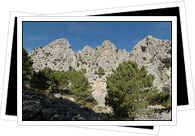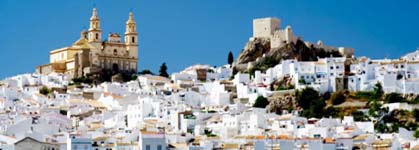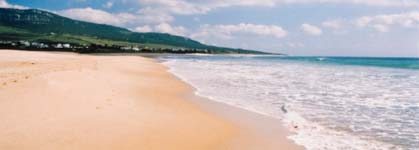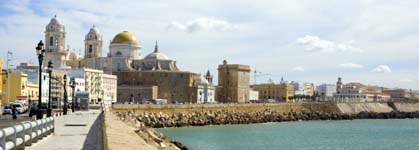
The nature parks surrounding the Cadiz province are chock full of natural treasures.
Sierra de Grazalema Natural Park
This is a park that straddles two territories – Malaga province and Cadiz province. Consisting of over 51,000 hectares of fir forests, it is also home to a colony of black vultures. The park has been declared a Biosphere Reserve by UNESCO in 1975. It is also a protected haven for the birds.
With rivers, caves and vast limestone landscapes, the park is quite beautiful. The park is near El Gastor, El Bosque, Benaocaz and Villaluenga del Rosario Y Zahara.
Los Alcornocales Natural Park
Thi park is named after the cork tree grove in it, which is the largest in the Iberian Peninsula. South of Sierra de Grazalema, it is quite huge with its 167,767 hectares. It also straddles the Malaga and Cadiz provinces.
Doñana Natural Park
This used to be called the “Forest of Doña Ana” after the Spanish duchess Dona Ana de Silva y Mendoza until it was later shortened into Doñana. It has a rich bird population, with a total of 250 species (150 are resident species while the other half are migratory species). These includes egrets, vultures, ducks, doves, falcons, herons, flamingos, geese and many others.
Bahia De Cadiz Natural Park
This is composed not just of forest land but also sandy beaches, lakes, marshes and saltpans. It has a rich collection of wildlife and houses 600 species of flora.
Estrecho Natural Park
“Painted fields” – this is what best described the wildflowers that grow in profusion during spring in this natural park. Its lands are home to olive, pines, cork oaks and palm trees. It is among the best places to go bird watching.
The Estrecho Natural Par sits on the southernmost tip of Spain and faces both the Mediterranean and the Atlantic Ocean on its two sides. These bodies of water are rich in marine wildlife – close to 2000 species of marine flora and fauna are said to be housed there. These include crustaceans, jelly fish, mollusks and sponges.
Breña y Marismas de Barbate Natural Park
This park is the smallest among all the parks in Andalusia, with only 4,863 hectares in its name. But it still has something to boast about. After all, it is the second largest in the region in terms of its coastal reserves. It is a very pretty sight, with craggy cliffs and dunes. The lighthouse of Cape Trafalgar stands majestically among its cliffs. Do try the pine nuts from Pinar de la Breña.
Bahia de Cadiz Natural Park
Cadiz Bay Natural Park covers around 10,000 hectares of saline marshland, agricultural and industrial land. It is highly populated. It used to contain salt mines that date back to the time of the Phoenicians. Today, these salt mines are used to cultivate oysters, sea bass, grey mullet, prawns and clams.
Pine groves, bulrushes, reeds and other plants and trees grow in profusion in its forests. This may be one of the reasons why a large population of birds make it their home in the winter and the summer. Its waters provide an ideal environment for clams, shrimps, crabs, sea bass, and other species.
Sierra de las Nievas Natural Park
The Sierra de las Nievas Natural Park is great for mountain and rock climbing, as it as the G.E.S.M., the world’s third deepest pothole. It also has gorges, cliffs and ravines that provide spectacular views of the mountains and forests. The park also houses a large population of mountain goats, deer, mountain ox and stag. These, as with the rest of the animals, are protected by law.
Acantilado Y Pinar de Barbate Natural Park
With only 3,130 hecatares to its name, it is home to cliff-dwelling birds. Black starlings, herns, silver gulls, jackdaws, egrets, finches, and the peregrine falcon are just among the myriad species of birds that flock here and make it an ideal place for bird watching. The flora is just as varied; the wide umbrella pine forest gives excellent shelter to palmettos, blackthorns, junipers and rosemary.
Internet Guide:
Adventure Sports






 The nature parks surrounding the Cadiz province are chock full of natural treasures.
The nature parks surrounding the Cadiz province are chock full of natural treasures.
